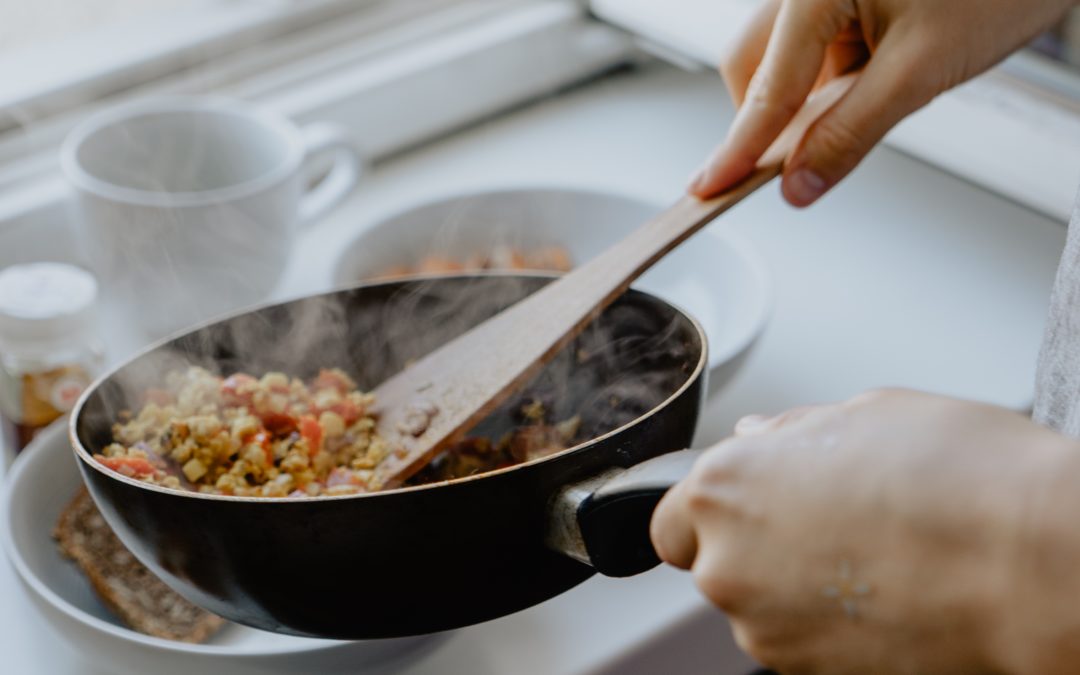A new year opens up new opportunities to get healthy, have more energy, and enjoy your life to the fullest. Choosing to go gluten-free in the New Year can be a delicious and simple way to make positive changes to your health and expand your comfort zone with food.
That’s right, we said delicious AND easy. The gluten-free diet had a bad rap for being bland, crumbly and uninspiring. But we can leave that mentality in 2018. Walk into your grocery store and you will find a growing list of gluten-free options that includes instant baking boxes, cereals, and even beer! Going gluten-free is only getting easier.
You also won’t have to sacrifice flavor. GLuten-free has never meant flavor-free. GLuten-free grains, in particular, are noted for their diverse flavors and versatility in the kitchen.
Whether you were recently diagnosed with Celiac’s disease or gluten intolerance, or you just want to make some healthy changes in the New Year, enjoy an easy resolution with these tips for going gluten-free in the New Year.
Start Fresh In The Kitchen
It’s challenging to turn a new leaf if you still have tempting treats and staples lingering in your kitchen. Take some time to clean out your pantry of all gluten-based products. Make sure to do this before restocking your pantry. Otherwise, you will continue to choose gluten-based products if they are still an option.
Gluten has made its way into a surprising range of foods, so make sure to read all your labels. Get rid of loaves of bread, pasta, frozen meals, canned soups, and even some ice creams. Donate unopened foods to your local food bank, and ask your friends and family if they want your gluten-based products. You can minimize a lot of waste this way.
If you have a serious gluten disorder like Celiac’s Disease, you will also need to toss opened condiments and spices, since these have probably been in contact with gluten-based foods.
The same goes for appliances that have touched gluten. Clean out your toaster and other appliances, or buy a separate one for your gluten-free bread products. You may want to purchase separate utensils too. Use this as an opportunity to invest in those new appliances you’ve had your eye on.
If you plan to share a household with people who are not going gluten-free, designate a few cabinets and shelves in the refrigerator that are just for you. Creating this boundary will ensure everyone’s food stays separate and you can easily commit to your goals.
Prioritize Fresh Produce and Meats
Starting a gluten-free diet isn’t only about what you remove from your diet, but also what you gain. You can open new doors in nutrition and flavor when you begin your gluten-free shopping in the produce aisle. The produce aisle is gluten-free heaven. There are so many fresh, colorful and naturally gluten-free foods. Whole, unprocessed foods include anything in the grocery store that does not have an ingredients list:
- Fruits
- Vegetables
- Unseasoned Meats
- Unseasoned Poultry
- Unseasoned Fish
- Eggs
- Natural yogurt, milk, and cheese
A good rule of thumb when shopping gluten-free is to stick to the edges of the grocery store. All the processed, refined and gluten-based products are typically located in the center aisles, so just avoid those completely.
Read Your Food Labels
Even after you have cleared your kitchen of gluten-based products, there will always be the possibility that a packaged food will contain gluten. Be diligent about reading labels when shopping. When you go out to eat, make a point to ask the waiter which dressings, seasonings, and other ingredients may contain gluten. If they don’t know, don’t eat it. Be confident and assertive about your needs, otherwise, they may not be taken as seriously as you need them to be.
Substitute For Gluten-Free Grains
No diet is complete without whole grains, but your grain options will look a little different now. Fortunately, there are loads of flavorful, nutrient-dense gluten-free grains that can easily be incorporated into your diet.
- Teff
- Sorghum
- Buckwheat
- Quinoa
- Certified gluten-free rice (including Indian rice and brown rice)
- Millet
- Certified gluten-free oats
- Amaranth
You can easily add these grains to any meal for a heartier serving. Check out our recipes for more inspiration about incorporating gluten-free grains into your diet.
Try Gluten-Free Baking Recipes
One food group you may be skeptical about is sweets and baked goods. But there are actually plenty of gluten-free baking recipes that taste just as delicious as the gluten-based baked goods. We love using teff flour for brownies and buckwheat for pancakes. You can use gluten-free flours for pizza dough, cookies, pasta, soup, and virtually anything you would typically use wheat for.
Use Products that are Labeled Gluten-Free
You won’t have to cook everything from scratch either. There are plenty of packaged gluten-free products including pasta, soups, candy, frozen foods, beer, and bread. Experiment with different brands to see which products taste best to you.
We wish you all the best in your journey to go gluten-free in the New Year! Do you know of any hacks for going gluten-free? Share them in the comments below!
Image courtesy of Wooden Earth Stainless Cutlery

